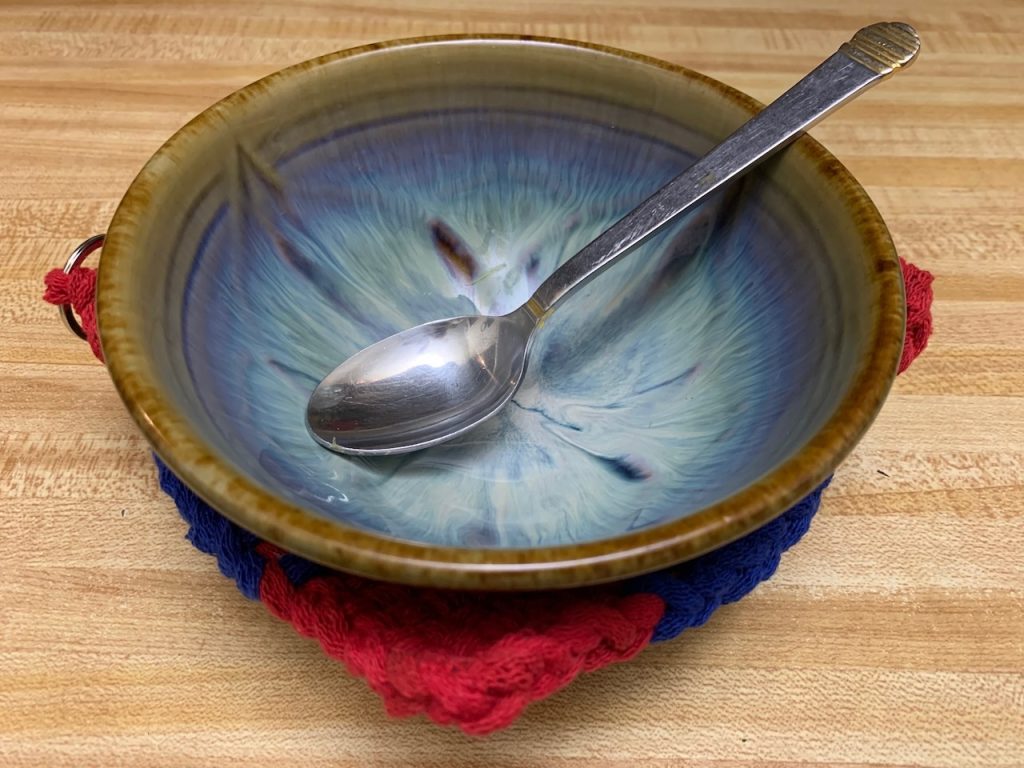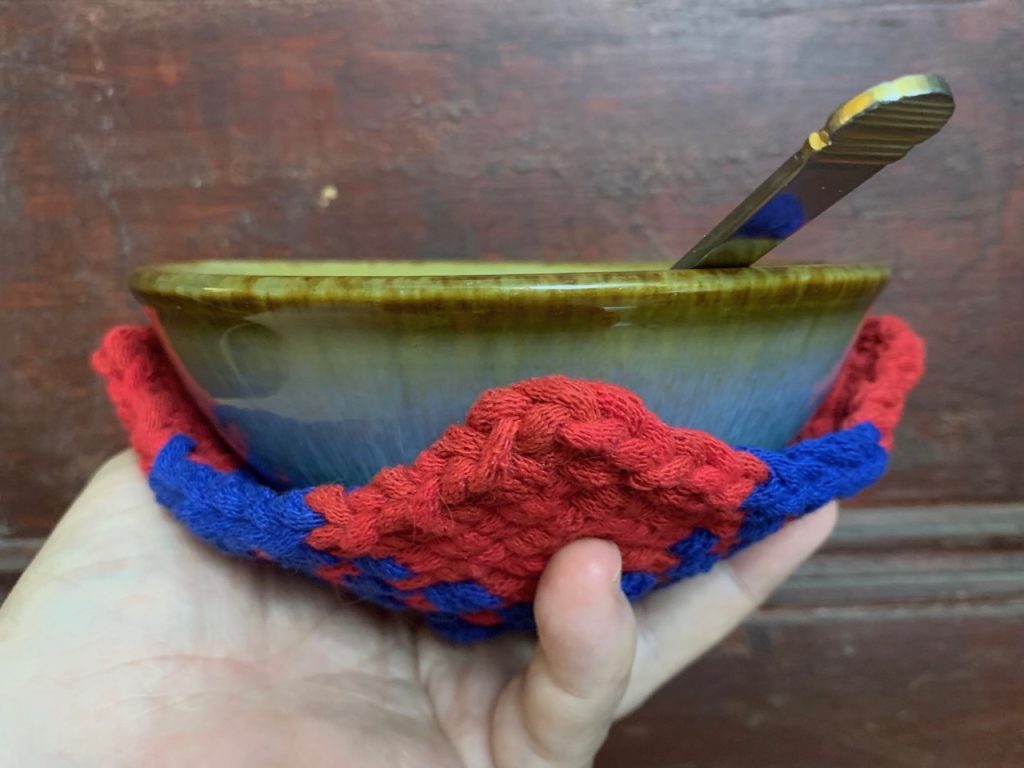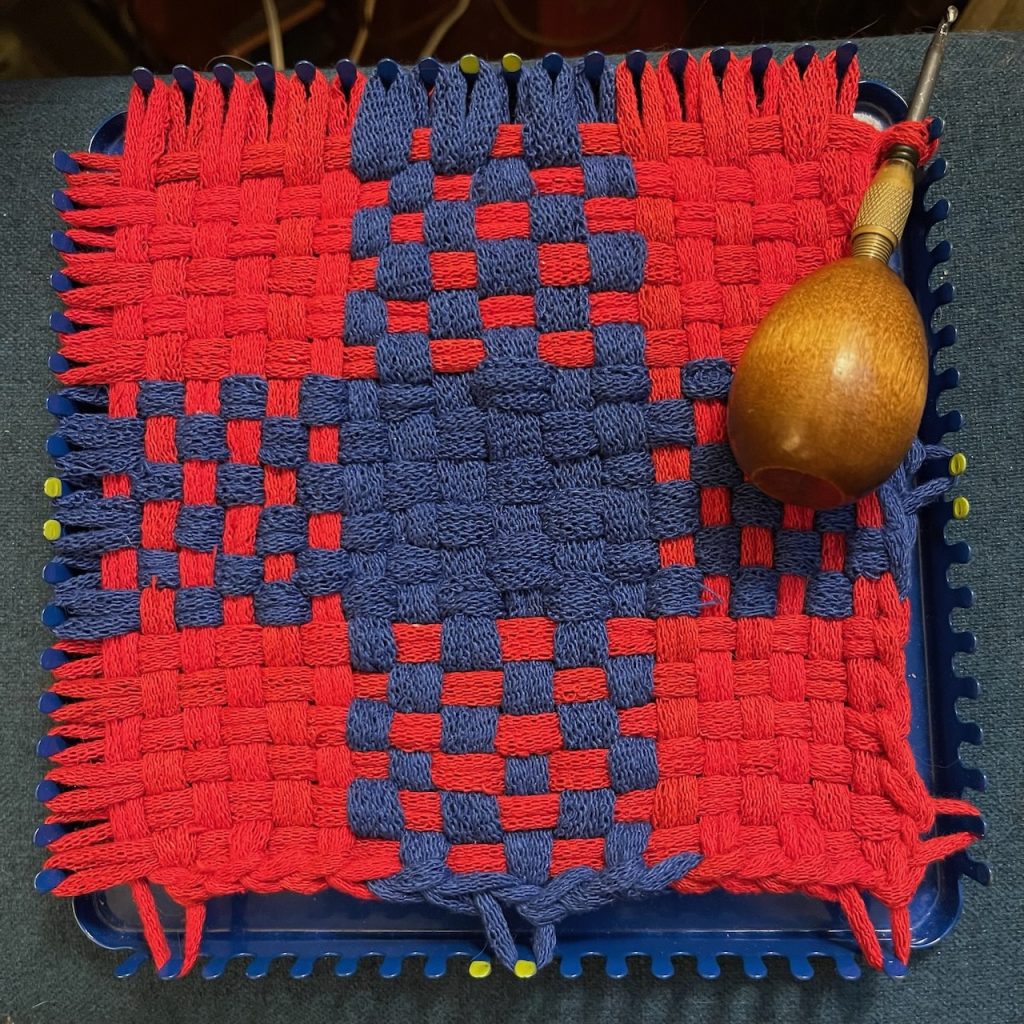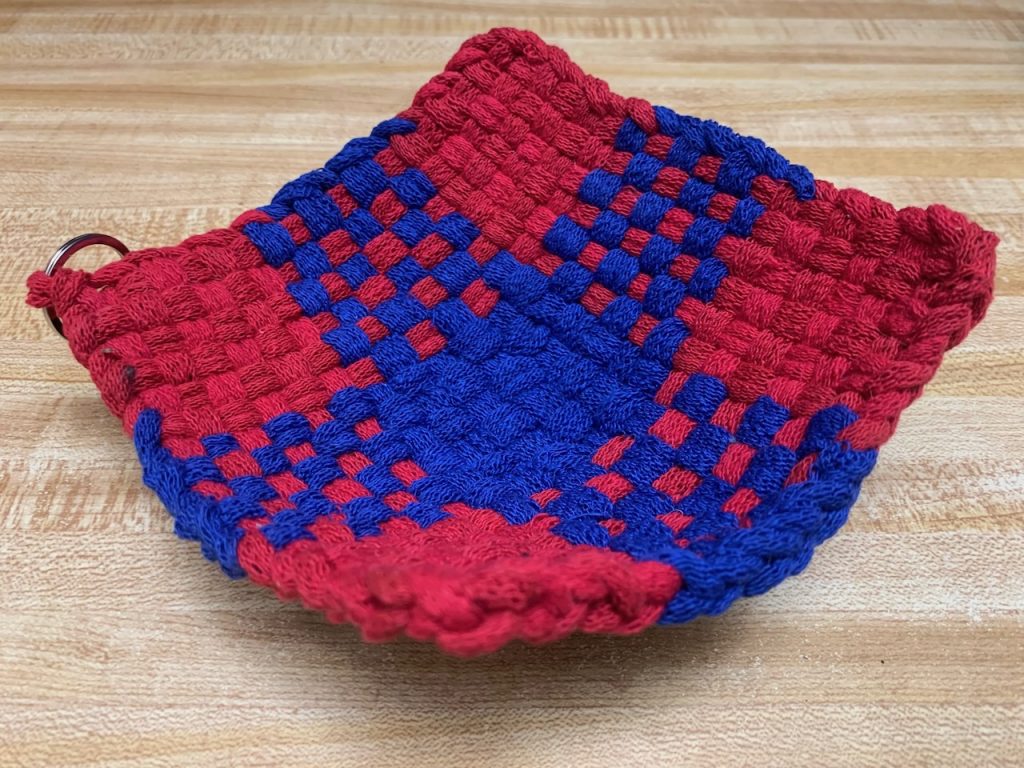Although the canonical use for woven-loop potholders is grasping pot handles in the kitchen or supporting hot casseroles at the dining table, it turns out that a lot of people also end up using them as “bowl cozies” — using them to cradle a bowl of hot soup (or cold ice cream) as they sit on their couch or the like.
There are techniques for stitching up the sides a potholder to get it to bend upwards into a cup or bowl shape, but a simpler alternative is to use the potholder’s natural tension and geometry to make that happen.
We’ve previously found some ways to do that by combining tabby and twill sections within a single weaving, but recently our clever son, Alex, suggested we try something radically simpler: combine bands of pro loops with bands of traditional loops to form sections of higher and lower compression.
Here’s a photo on the loom, with bands of red traditional loops surrounding bands of blue pro loops, all woven in basic plain weave (over 1/under 1).
This example was woven on an 18-peg loom, using 12 pro loops and 24 traditional loops. The loom was warped with 6 traditional loops, then 6 pro, then 6 traditional — and that same pattern was repeated for the weft loops.
(You could tweak this by varying the width of the bands — for example, I suspect that you would get a slightly different bowl shape by using 4 traditional loops, then 10 pro, then 4 traditional.)
In this example, the color changes in bands, corresponding to the loop size changes, but this isn’t a necessary element — you could use any colors you’d like, in any sequence, it’s just the length that matters — so you can combine this technique with almost any traditional-size weaving pattern you might like.
While you’re weaving it, everything seems normal, but after you bind it off, the sections around the edge pull up while the section in the middle relaxes, creating a natural bowl shape.
You can tug it with your fingers a bit to block it, like reshaping a hat, to form a slightly shallower or deeper shape.
That shape would fit nicely around a small bowl of hot chili — or an ice cream sundae!

If you give this a try, drop us a line and let us know how it turned out!










